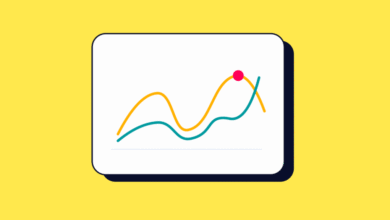AI-Powered Campaigns and Smart Bidding in 2025: A Complete Guide

In just a few years, the role of automation in digital advertising has gone from experimental to essential. Google Ads in 2025 is no longer a platform where manual bid tweaks and static campaigns can compete. Instead, it’s a fully intelligent system that rewards advertisers who know how to work with automation, not against it.
Smart Bidding, powered by Google’s AI, has evolved far beyond its early days of optimizing for simple conversion events. It now evaluates millions of signals at the moment of each auction, adapting in real time to user behavior, intent, and predicted value. It also learns faster, connects across platforms more intelligently, and offers more control through strategic inputs like goals, value tracking, and conversion quality.
But here’s the reality: simply turning on Smart Bidding doesn’t guarantee results. Performance comes from knowing when and how to use each bidding strategy, setting clear objectives, and feeding the system the data it needs to make the right decisions.
This guide is designed to give you clarity in a landscape that’s growing more complex by the day. Whether you’re managing Search, Shopping, or Performance Max campaigns, you’ll learn how each bidding strategy works, what pitfalls to avoid, and how to structure campaigns that give AI the space to succeed, while keeping your goals firmly in control.
How Many PPC Bid Strategies Does Google Ads Have?
Google Ads currently offers a total of seven main bidding strategies, which can be grouped into three categories based on the goal they serve: conversion-based, click-based, and visibility-based. Each of these strategies is supported by Google’s AI infrastructure and is designed to optimize performance for specific outcomes. Understanding these categories is crucial for choosing the right strategy that aligns with your campaign objectives.
Conversion-based strategies aim to drive specific user actions, such as purchases or lead submissions. These include Maximize Conversions, Maximize Conversion Value, Target CPA, and Target ROAS. These methods use machine learning to optimize bids in real time based on the likelihood that a user will convert.
Maximize Conversions is best suited for campaigns focused purely on volume. It works well when you want to gather as many leads or sales as possible within your available budget, particularly for new campaigns without much conversion history.
Subscribe to our mailing list to get the new updates!
Maximize Conversion Value optimizes for total conversion value instead of quantity. This is ideal for ecommerce brands or any business where some conversions are worth significantly more than others. You’ll need accurate value tracking to make the most of this strategy.
Target CPA (Cost Per Acquisition) allows you to control cost-efficiency by setting a target price for each conversion. Google adjusts your bids in an attempt to maintain that average CPA across the campaign.
Target ROAS (Return on Ad Spend) focuses on achieving a specific revenue return relative to your ad spend. It’s a powerful model for advertisers with established performance data and consistent sales value.
Each strategy has a place depending on where your campaign is in the funnel and how much data you’re working with. We’ll dive deeper into each of these in the next sections.
Click-Based Bid Strategies
Click-based strategies are designed to drive as many clicks as possible, regardless of what happens after the user lands on your site. The most common option here is Maximize Clicks, which tells Google to get you the highest number of clicks within your set daily budget.
This strategy works best when your primary goal is website traffic. For example, if you’re running a content-heavy landing page or promoting a new brand experience, Maximize Clicks helps drive visits without requiring historical conversion data. It can also be useful in the early stages of a campaign when you’re gathering audience insights, testing landing pages, or expanding remarketing lists.
However, Maximize Clicks should be seen as a short-term tactic, not a performance strategy. Since it doesn’t optimize for conversion quality or user intent, it’s often less efficient in cost-per-lead or revenue-driven campaigns. Use it carefully and always monitor traffic quality to ensure you’re not attracting irrelevant clicks that dilute your budget.
Visibility-Based Bid Strategies
Visibility-based bidding strategies prioritize where and how often your ads appear on the search results page. The most common strategy in this category is Target Impression Share, which allows you to specify the percentage of auctions where you want your ad to show and where on the page it should appear, such as the top of the page or absolute top position.
This approach is ideal when brand visibility is the priority. For example, if you’re trying to dominate branded search terms, maintain a competitive presence in a high-stakes industry, or ensure your ads outrank a specific competitor, Target Impression Share gives you the levers to control your ad’s position. It’s also useful during product launches or seasonal pushes when being seen is more important than immediate conversions.
However, visibility-based bidding doesn’t consider user intent or conversion likelihood. It can lead to higher costs and lower returns if not paired with a clear purpose. This strategy works best when your goal is awareness, brand lift, or impression share control, not efficiency or scale.
Target Cost Per Action (CPA) Bidding
Target CPA is one of the most commonly used Smart Bidding strategies, especially for advertisers focused on lead generation or customer acquisition. It works by allowing you to set a desired average cost per conversion, and Google’s algorithm will then optimize bids to try to meet that target across the campaign.
This strategy is best suited for accounts with a stable conversion history. Google needs enough past data to understand which user signals typically lead to conversions and what patterns are worth bidding on. If you’re launching a brand-new campaign with no previous data, Target CPA may struggle to gain traction and can cause erratic delivery.
The strength of Target CPA lies in its predictability. It helps marketers control acquisition costs while still benefiting from AI-driven optimization. However, it’s important to remember that the system works with averages. Not every conversion will hit your exact CPA target, some may cost more, others less. Over time, the algorithm aims to balance these fluctuations.
Common pitfalls include setting your CPA target too low, which can throttle impressions and restrict learning. Another risk is frequent changes to targets, which can reset the learning phase and destabilize performance. To make the most of this strategy, start with a realistic CPA goal based on historical data and give the system time to adjust.
Target CPA is ideal when you know what you’re willing to pay for a lead or customer and want to automate bid decisions without losing control over efficiency.
Target Return on Ad Spend (ROAS) Bidding
Target ROAS is the most revenue-driven bidding strategy in Google Ads. It allows advertisers to tell Google exactly how much return they expect for every dollar spent. For example, setting a Target ROAS of 500% means you want to earn $5 in revenue for every $1 invested in ads. Google’s Smart Bidding system will then adjust bids in real time to help achieve this goal.
This strategy is especially powerful for ecommerce and direct-to-consumer (DTC) brands with clearly defined purchase values and strong conversion tracking. It’s most effective when you have a large enough data set for Google to understand which types of users tend to generate high-value conversions. For this reason, Target ROAS works best in campaigns that already have a consistent sales volume and a diverse product range with variable pricing.
To implement Target ROAS successfully, you need to set accurate benchmarks. These should be based on your business margins, product pricing, and historical campaign data. Setting the ROAS target too high can limit reach and cause delivery issues, while setting it too low may waste budget on unprofitable traffic. Start with a target that reflects your actual average return, then gradually raise it once performance stabilizes.
Another key to success is enabling dynamic conversion value tracking. Google needs to know the precise value of each sale, not just the number of conversions. This allows the algorithm to prioritize high-value transactions and shift budget accordingly.
Target ROAS is not a set-it-and-forget-it strategy. It requires careful monitoring, clear revenue attribution, and periodic adjustments based on seasonal trends or changes in pricing. But when managed well, it can drive highly efficient scaling, especially for businesses focused on maximizing revenue rather than volume.
Maximize Conversions Bidding
Maximize Conversions is one of the simplest Smart Bidding strategies, yet it can be incredibly effective when used in the right context. This strategy tells Google to generate as many conversions as possible within your daily budget, without requiring you to set specific targets like CPA or ROAS. The algorithm dynamically adjusts bids in real time to prioritize users who are most likely to convert.
This bidding method is especially useful in the early stages of a campaign. If you’re launching a new product or offer and need to gather performance data quickly, Maximize Conversions can help accelerate learning by aggressively pursuing volume. It is also ideal for top-of-funnel (TOFU) campaigns where your goal is to build remarketing lists, drive signups, or increase lead volume, even if the individual value of each conversion is relatively low.
Behind the scenes, Google analyzes hundreds of user signals per auction, such as device type, location, time of day, browsing history, and more, to determine which impressions are most likely to lead to a conversion. It then adjusts bids accordingly to make the most of your available budget.
However, it’s important to keep an eye on quality. Since the algorithm is focused on quantity, you may end up with a high number of low-intent leads or lower-value purchases unless you have proper conversion tracking and audience segmentation in place. For campaigns with strong downstream conversion events, like lead qualification or sales team follow-ups, this strategy works best when paired with offline conversion imports or CRM feedback loops.
Maximize Conversions offers speed and simplicity, but still benefits from strong structure, clean data, and clear campaign intent. When those elements are in place, it can deliver high-impact results with minimal manual effort.
Maximize Conversion Value Bidding
Maximize Conversion Value is the go-to bidding strategy for advertisers who care more about revenue than raw conversion count. Instead of focusing on how many conversions you can get, this strategy focuses on getting the highest total value possible within your daily budget. It’s an ideal fit for ecommerce businesses, subscription services, or any advertiser whose conversion values vary significantly.
This strategy is particularly useful in high-ticket funnels or where customer lifetime value (LTV) is the primary success metric. For example, if you’re selling products or services with varying price points, or if you’re in B2B, SaaS, or luxury retail, Maximize Conversion Value helps you direct spend toward audiences and actions that are likely to generate higher returns, not just more leads.
The key to success with this model is enabling accurate and dynamic revenue tracking. You need to pass real-time transaction values back to Google Ads through your conversion tag or Google Tag Manager. If you only track conversions without assigning them value, the system can’t distinguish between a $20 sale and a $200 one. With proper tracking in place, Google will automatically prioritize higher-value outcomes.
Another advantage of this strategy is that it tends to scale well when paired with broader audiences and fewer campaign restrictions. Since the algorithm is optimizing toward overall revenue, not individual transactions, it performs best when it has freedom to test and learn across placements, audiences, and creative formats.
Maximize Conversion Value is ideal for advertisers who trust the system, have strong value tracking, and want to grow revenue without overcomplicating targeting or bid adjustments. When set up correctly, it can deliver significant returns with less manual oversight.
Maximize Clicks Bidding
Maximize Clicks is a simple, volume-driven bidding strategy designed to help you get as many clicks as possible within your set daily budget. It’s often used in campaigns where traffic volume is the main goal, rather than conversions or revenue. This makes it ideal for awareness campaigns, landing page testing, or growing remarketing lists.
If you’re launching a new campaign and need to quickly drive visitors to a content page or test engagement with different audiences, Maximize Clicks can be a fast way to generate that initial data. It doesn’t rely on historical conversion performance, which makes it beginner-friendly and useful during experimental phases.
However, it’s important to recognize the limitations. Maximize Clicks does not optimize for intent or action beyond the click. If your ad copy or targeting is broad, you may end up paying for traffic that doesn’t convert. And while the cost per click might look appealing, low-quality visits can dilute your return on ad spend.
This strategy should be used with intention and typically for short-term objectives. It’s best paired with high-quality landing pages, strong call-to-action elements, and narrow audience targeting to improve the chances of post-click engagement. Once enough data is gathered, it’s usually more efficient to transition to a conversion-based bidding model for sustained performance.
Maximize Clicks is a useful tool, but not a sustainable strategy for campaigns focused on lead generation or direct response. It’s a stepping stone toward more intelligent bidding methods.
Target Impression Share Bidding
Target Impression Share bidding is designed to give advertisers more control over where their ads appear in Google Search results. Instead of optimizing for conversions or clicks, this strategy focuses on ad visibility, specifically how often your ads appear, and in what position.
This bidding method is most effective when brand visibility is the primary goal. For example, if you want to ensure your ads dominate for branded search terms or appear above a key competitor, you can set your Target Impression Share to prioritize placements like ‘top of page’ or ‘absolute top’. You also specify the percentage of auctions in which you’d like your ad to appear in those positions, such as 80% or 100%.
It’s frequently used in campaigns where brand awareness is more valuable than direct conversions, such as during product launches, competitive bidding situations, or local service promotions where you need to be seen first.
However, this strategy has its drawbacks. Because it prioritizes placement over performance, it can be more expensive than other bidding types. Google may increase your bids to help achieve your impression goals, even when user intent is low. This can lead to a lower return on ad spend and wasted budget if the traffic isn’t qualified.
Additionally, in highly competitive industries, trying to maintain high impression share at the top of the page can result in inflated CPCs, especially on broad or non-branded terms. If budget is limited, it’s easy to overpay without seeing proportional results.
Target Impression Share bidding should be used with a clear strategy in mind. It’s most effective when paired with tight keyword targeting, limited match types, and strong ad relevance. It gives you more control, but requires you to watch performance closely to ensure your visibility isn’t coming at the cost of efficiency.
What About Manual Bidding?
While automation dominates most bidding strategies in 2025, manual bidding still holds a place, especially for advertisers who require full control over their campaign behavior. Manual bidding allows you to set maximum cost-per-click (CPC) bids at the ad group or keyword level without any algorithmic intervention. This gives experienced advertisers a high level of granularity and precision, which can be critical in very specific use cases.
Manual CPC is particularly helpful when you want to control bids on high-stakes keywords, protect margins on ultra-competitive terms, or test new campaign hypotheses without AI interference. It’s also valuable for industries where conversion tracking is unreliable or where long sales cycles make data feedback loops slower and less actionable.
However, it comes with trade-offs. Manual bidding requires constant monitoring, lacks real-time signal processing, and does not benefit from Smart Bidding’s ability to optimize across audiences, devices, or time-based intent. If your campaign covers a large keyword set or has dynamic performance patterns, manual bidding can quickly become inefficient.
Google also offers Enhanced CPC (ECPC), a hybrid approach that allows the algorithm to raise or lower your manual bids based on predicted conversion probability. While ECPC offers some automation, it’s not as powerful or comprehensive as full Smart Bidding.
In short, manual bidding is still relevant for advertisers who want full control and are willing to trade efficiency for precision. But for most campaigns, especially those with conversion goals and sufficient data, Smart Bidding remains the more scalable and performance-oriented choice.
Choose the Right Strategy for Your Specific Goals
Choosing the right bidding strategy isn’t just about picking the most advanced option. It’s about aligning your business objective with how the algorithm behaves. Smart Bidding thrives when it has clear signals, a strong conversion framework, and a strategy tailored to the campaign’s intent.
If your goal is lead generation, strategies like Maximize Conversions or Target CPA work well, especially when you already understand the value of a lead and want to acquire them at scale. For ecommerce brands, Maximize Conversion Value or Target ROAS are often more appropriate, since they consider transaction value and can be optimized around profitability.
Top-of-funnel campaigns that aim to build traffic, awareness, or remarketing audiences might benefit from Maximize Clicks or even Target Impression Share, depending on whether visibility or engagement is more important. However, once you gather enough data, transitioning to conversion-focused models will yield stronger long-term performance.
It’s also essential to match the bidding model to your funnel stage. Broad, awareness-level audiences often perform better with less restrictive strategies, while campaigns targeting users close to conversion benefit from more precise CPA or ROAS targets.
Budget also plays a role. Smart Bidding needs enough data to optimize effectively. If your campaign doesn’t generate a minimum of 30 conversions per month, aggressive models like Target ROAS may underperform. In those cases, start with Maximize Conversions or ECPC until volume picks up.
Ultimately, the best bidding strategy is the one that reflects your business goals, your funnel maturity, and the strength of your tracking infrastructure. Let the campaign objective lead the bidding decision, not the other way around.
Smart Bidding in Google Ads: In-Depth Guide
To truly understand Smart Bidding, it helps to look under the hood. This isn’t just a tool that adjusts bids automatically. It’s a real-time auction engine that evaluates every impression opportunity individually, calculating the optimal bid in a split second based on hundreds of data points.
How does real-time auction bidding actually work?
Each time a user enters a query that matches your campaign’s criteria, Google evaluates factors like device, location, time of day, browser, past interactions with your brand, predicted conversion probability, and more. These signals are used to calculate the best possible bid to meet your campaign goal, whether it’s conversion volume, revenue, or visibility. The algorithm does this not once per keyword or ad group, but separately for every auction. This auction-time bidding makes Smart Bidding vastly more adaptable than any manual setup.
What role does cross-signal learning play?
Google’s AI doesn’t operate in silos. It pulls insights from across channels and campaign types, learning from how users interact with your brand on Search, YouTube, Display, and Shopping. These cross-signal learnings improve prediction accuracy and help the algorithm optimize for more meaningful outcomes.
For example, if a user has previously watched one of your YouTube ads, browsed product pages, and interacted with a remarketing banner, Smart Bidding understands that this user is further along in the funnel. It may bid more aggressively in the search auction, even if that keyword normally doesn’t justify a high CPC.
What about budget pacing and delivery?
Smart Bidding also monitors pacing and adjusts delivery dynamically. If your campaign is underdelivering early in the day, the system may increase bids slightly later to meet your budget target. Conversely, if the algorithm detects that your budget might run out too quickly, it will become more selective. This intelligent pacing helps smooth delivery throughout the day and across high-value touchpoints.
In short, Smart Bidding is not just reacting to performance. It is actively predicting outcomes and steering your campaign toward your goal with every auction. This level of adaptability is why structuring your campaigns correctly and giving the system clean, consistent data is so important. The algorithm is powerful, but only if it understands what success looks like.
Streamlining PPC Workflows With AI
Artificial intelligence doesn’t just enhance performance, it also transforms how paid media teams operate day to day. In 2025, AI is helping advertisers automate repetitive tasks, accelerate testing, and manage campaigns at scale with greater precision and less manual work. The result is a more strategic workflow, where human time is spent on creative thinking, planning, and optimization instead of spreadsheet wrangling or bid adjustment.
One of the most impactful changes has come through automated campaign recommendations and real-time insights. Google Ads now provides predictive bid suggestions, audience expansion opportunities, and alerts for anomalies that used to take hours to spot manually. AI-powered tools like Google’s Optimization Score, asset performance ratings, and bid simulations allow teams to adjust faster and with more confidence.
Beyond the platform itself, external tools like PPC management software, reporting dashboards, and creative intelligence platforms help streamline workflows. For example, advertisers are using AI to generate creative variants for testing, organize ad assets by performance tiers, and sync performance data across platforms without hours of manual exports and uploads.
That said, automation doesn’t mean giving up control. The most effective advertisers use AI to enhance, not replace, creative strategy. While machines handle bidding, pacing, and segmentation, humans still guide messaging, audience understanding, and funnel architecture. It’s not about doing less work. It’s about doing the right work.
If your team is stretched thin or managing multiple accounts, building AI into your workflows can reduce errors, increase agility, and help focus energy where it matters most: decision-making and growth.
Google Shopping Tips
Shopping campaigns in 2025 are more automated and data-driven than ever. With the rise of Performance Max, Google has combined Shopping ads with a broader range of placements and signals. While this unlocks scale, it also introduces complexity in how you manage bidding and structure your product catalog.
The key to winning in Shopping is to combine automation with clear input signals. If you rely entirely on Performance Max without giving it strong conversion data, well-organized product groups, or competitive pricing, you’re leaving money on the table.
Start by segmenting your product catalog intelligently. Instead of lumping everything into one asset group, break your products out by:
- Price tiers
- Profit margins
- Bestsellers vs. seasonal inventory
- Product categories or brands
This allows you to allocate bids, budgets, and creative assets in a way that reflects business goals. High-margin items might warrant higher bids or stronger creative support, while clearance products can be grouped separately to avoid wasting spend.
When it comes to bidding, most advertisers are choosing between Maximize Conversion Value with a target ROAS or letting Google optimize freely. The right choice depends on your volume and predictability. If you have strong sales data and clear profitability thresholds, Target ROAS can help control performance. If you’re still building data or trying to identify winners, Maximize Conversion Value without constraints can unlock faster learnings.
Finally, make sure your product feed is clean and enriched. Titles, descriptions, images, and structured attributes should be optimized not just for relevance, but for AI readability. Google uses this data to determine which products to show and to whom.
In Shopping, success comes from strategic structure, data clarity, and feeding the algorithm with enough signals to understand what to prioritize. You don’t need to micromanage bids, but you do need to guide the system with smart setup and constant refinement.
Building an AI Search Strategy With Limited Resources
You don’t need a large team or a six-figure budget to make AI work for your search campaigns. In fact, small teams are often better positioned to move quickly and implement automation efficiently. The key is focusing on the right foundations, structure, tracking, and clarity of goals.
Start with a strong campaign setup. Use consolidated structures like broad match keywords with Smart Bidding, or lean Performance Max campaigns with clearly defined asset groups. Avoid over-segmentation, which can fragment your data and confuse the algorithm.
Make sure your tracking is accurate. Enhanced conversions, dynamic value tracking, and offline imports help Google understand what matters most to your business. Without these signals, even the best Smart Bidding model will struggle to optimize properly.
Set clear goals at the campaign level. Instead of trying to control every lever, define success in simple terms: cost per lead, return on ad spend, or total conversion volume. Then let the system learn within those boundaries.
Leverage AI-powered tools for automation wherever possible. Use automated rules to control budgets, alerts for performance changes, and scripts to manage product feed health. These tools free up time and reduce errors.
Most importantly, stay focused on iterative improvement. You don’t need to do everything at once. Start with one or two campaigns, document your results, and expand from there. AI rewards consistency and clarity, not complexity. When your strategy is simple and your goals are well-defined, even a small team can outperform much larger competitors.
Increasing Google Discover Visibility Through Smart Targeting
While not a bidding strategy in the traditional sense, Google Discover visibility has become an important part of a full-funnel paid and organic strategy. Discover surfaces personalized content to users based on their interests, search behavior, and browsing history. Getting featured here can lead to massive engagement without the need for active searches.
To improve visibility on Discover, advertisers and content marketers need to think like Google’s algorithm. Focus on high-quality, mobile-optimized content that loads quickly and delivers immediate value. Headlines should be descriptive and intriguing, while images must be compelling and formatted correctly to catch attention in a scroll-heavy feed.
Structured data also plays a role. Use schema markup to provide context to your content, and ensure your metadata accurately reflects what users can expect. This helps Google’s AI understand your pages and match them to the right audience.
Content freshness is critical. Discover tends to prioritize timely or recently updated pieces, especially those tied to trending topics or seasonal interest. Regular publishing, updates, and cross-platform engagement can all contribute to stronger performance.
Finally, track user behavior beyond the initial click. Discover traffic can be volatile, so monitor engagement metrics like time on page, bounce rate, and scroll depth. If your content consistently retains users and aligns with their interests, Discover will reward you with more visibility over time.
Though Discover isn’t directly controlled by Smart Bidding, it’s a valuable component of a broader AI-driven content strategy. Strong visibility here supports retargeting, brand lift, and bottom-funnel efficiency by reinforcing touchpoints throughout the customer journey.
Final Thoughts
AI-powered Smart Bidding has transformed how we approach paid search. It’s no longer about adjusting bids manually or micromanaging keywords. Today, your role as a strategist is to guide the system, providing clear objectives, high-quality data, and a campaign structure that supports intelligent automation.
When Smart Bidding is fed clean conversion data, accurate value signals, and consistent audience behavior, it performs exceptionally well. But when inputs are weak or goals are vague, even the best algorithm can underdeliver. This means your setup matters more than ever.
Think of AI not as a replacement for your marketing expertise, but as a powerful assistant. You still make the strategic decisions. You define what success looks like. The algorithm simply helps you get there faster and more efficiently.
So whether you’re working with a small team or managing large-scale accounts, the key is the same: structure with intention, test with purpose, and stay curious. Smart Bidding doesn’t reward shortcuts, it rewards clarity.
If you commit to building the right environment, AI won’t just save you time. It will become your most valuable asset for driving sustained performance in 2025 and beyond.
Wanna see how your website perform?
Let's run a comprehensive technical SEO audit for your website and share a compelling SEO strategy to grow your online business.
SEO Audit →


